
Design the Organization
Nurture taste, talent, and a design culture.
You might not know about a company in Silicon Valley called SanDisk. It's not up there in the pantheon of technology and service companies that most people recognize along with Apple and Microsoft (or Facebook, Google, and Yahoo, for that matter). But SanDisk is a Fortune 500 multinational that is the world's largest dedicated provider of flash memory storage solutions.
In earlier days, flash memory was used to store the pictures you'd taken in your digital camera and the phone numbers of your friends in your cell phone. With the rise of computer networks and the subsequent demise of the floppy disk in the late 1990s, people still occasionally needed a way to conveniently store a few files in a format that would be easy to move from computer to computer without the hassle of connecting to a network. The USB connector had become a staple on computers and other devices, so by bolting flash memory onto a USB connector, companies began making thumb drives.
Founded in 1988, SanDisk was the leader in flash memory in the form of chips that were built directly into cameras and cell phones and also individual “cards” that you could plug into your digital camera, PDA, or mobile phone. When SanDisk decided it was time to make its own thumb drive, the company asked LUNAR to help with the design. Why did a company that had been making flash memory for years, a leader in the field, need our help? This would be SanDisk's first three-dimensional product that went beyond its flat card memory products. The company didn't have designers in-house, and the decision makers thought that as long as they were moving in a new direction they might as well use design to make a statement and a good impression with customers and the market.
Rather than create a thumb drive with fixed memory hidden inside, SanDisk reckoned it would be better to equip its thumb drive with a removable secure digital (SD) card, which was a popular format at the time. With that mandate, we designed and engineered a product called the Cruzer, which was as much a thumb drive as it was a go-between to get your pictures off the camera and onto the computer. Cruzer resembled a turtle: In its stored position, the head and limbs were all tucked inside a protective shell, but by sliding the switch on the top of the device you could expose the USB “head.” Slide it in the opposite direction and the SD card, or “tail,” popped out. Shifting to neutral secured the connector and card inside the shell, as if the turtle were in the tucked-in defensive mode.
For several years, SanDisk retained us to help design a range of thumb drives, adapters, and even portable digital music players, and we worked hard to bring a level of beauty and ingenuity to this new family of products so they would rise above the ordinary and the mundane and have a touch of charisma. But these efforts were threatened by companies known as original equipment manufacturers (OEMs), which pitch new products to companies that come already designed and tooled and ready to have a name and a label—gany label—slapped on.
OEMs allow companies like SanDisk to buy, package, and drop new products into their established retail distribution network. These products don't have the heart, soul, and design savvy of the products we were designing for SanDisk, but they are enticing for any company. Companies like SanDisk are constantly bombarded by offers from OEMs, and how can they refuse such a great offer? How does a product manager or a chief executive say no to a plug-and-play revenue stream? You don't have to hire a design firm or worry about prototyping, development, and production. No fuss, no mess, and the product is in the pipeline to customers in the blink of an eye.
The SanDisk Cruzer was a uniquely-designed portable USB flash drive that featured removable media in a package that protected the USB connector without the need for a cap. Image: Sandbox Studio
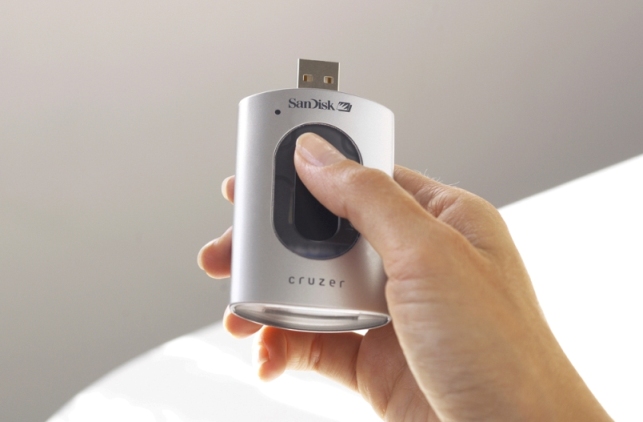
When a company adds products to its catalog in this way, it risks sending a message to customers that the brand is just a middleman that resells random products from other manufacturers. It demonstrates that there is at most a soft commitment to using design as a compelling differentiator. This can easily happen when there is no guiding design voice or the presence of a design tastemaker in the organization.
In Chapter 1, I discussed how Apple drives design to the extreme emotional engagement of beauty, ingenuity, and charisma to generate blockbuster products. But for most companies, there are always temptations to take shortcuts or to be distracted by short-term opportunities (e.g., the OEMs flirting with SanDisk and offering fast solutions to product design and revenue growth). How can a company—especially a public one, like SanDisk, that is responsible to its shareholders—resist such temptations and the promise of increased market share?
The secret is to establish core design values in your organization that are nonnegotiable priorities and embed them in the corporate culture. To achieve this, you must acquire design taste, hire the right design talent, and then weave these design values and culture into the fabric of the organization. In addition, there must be a person who functions as the arbiter of taste and who maintains the design standards and values.
TASTE
The life trajectories of two of the most influential men of the high-tech era, Steve Jobs and his longtime rival at Microsoft, Bill Gates, are uncannily similar. Both were born in 1955; both became technology wizards in high school and later were college dropouts. They each founded and built companies whose products and services have changed the way we live and work and interact with computers. But that's where the similarities end and the design divergence begins.
Gates was a master software entrepreneur who through partnerships and licensing deals dominated the personal computer market and gobbled up market share in that domain. Gaining market share was his driving passion, while design rarely figured into his business plan. By extreme contrast, of course, Jobs formed Apple around the concept of design and saw everything through that lens. Apple has a deep and abiding sense of design taste. Microsoft does not.
A remarkably funny video that went viral in 2006 brought into sharp focus Microsoft's lack of commitment to design. Accompanied by the driving assembly-line rhythm of Danny Elfman's “Breakfast Machine,” the video imagines what the design process at Microsoft would have been like if that company had created packaging for Apple's iPod. The Microsoft team starts with Apple's sleekly minimalist white box from 2005 and reworks it to meet the less rigorous standards of typical Microsoft packaging. The video, with the tongue-in-cheek title “Microsoft Redesigns iPod Packaging,” shows the austere iPod box being overloaded with words, charts, logos, hard-to-read regulations, and an assortment of flags and banners. Quotes periodically show up on screen in the voice of the well-meaning marketing manager who is directing the design team's work on the box. The box becomes a cheap, overworked mess, indistinguishable from any other product on a store shelf. “It really stands out!” the final caption proudly proclaims.1
Snippets from a video that was leaked onto the Internet parodying the Microsoft approach to package design by asking what if it had created the iPod package. It's hard for most organizations to deliver the kind of impactful simplicity that Apple employs.
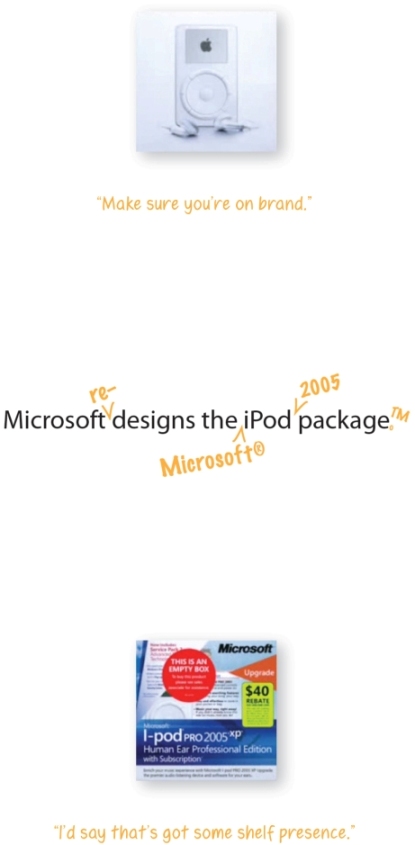
The video is both funny and revealing, as it bluntly portrays the Microsoft way of thinking—so much so that you'd think Apple had concocted this unflattering portrait to mock its rival. Yet it was actually made internally by Microsoft's packaging designers to challenge the marketing team to do better. Much to its credit, Microsoft itself recognized the need to ratchet up its design bona fides.
Design taste is always tough to define. One day, while standing in a drugstore checkout line, I found myself staring at an ugly clock. It was hanging on a wall at the front of the store for all to see. It wasn't a regular sort of ugly; it was horribly ugly. Call it nuclear ugly. Sliced from some unsuspecting tree trunk that never hurt anybody, the heavily shellacked face of the clock preserved pictures of red roses and drippy script type that spelled “LOVE.” The hands and numbers were plastic, with a cheap layer of shiny gold crap covering them.
I was just buying some razor blades, but here I was, my disdain for this object growing in intensity. Then, out of the blue, the woman in front of me pointed at the monstrosity of a clock. “Honey,” she said to the young girl accompanying her. “Go see how much that is.” My own mother is known for a number of sayings that I carry around with me and like to quote when the moment is right. One of them perfectly fit this moment: “There's no accounting for taste.”
That also applies to design. Before the first iPhone was launched in 2007, a client of ours was using a focus group to get feedback on preferences and habits related to certain electronic products. “They should all be black and silver,” declared a rather vocal leader in the group. Everyone else nodded in submission. “Yes, black and silver,” they droned in unison. Then the moderator checked the time on her Motorola Cobalt phone, a lustrous blue, folding number with silver trim. Everyone ogled the phone. Then they changed their votes to multicolored products.
Many manufacturers fear that after the long, hard slog of developing a new product and getting it out the door, the market will reject it because of its looks. More often than not, this happens because the managers listen too intently to focus groups. So many products are made without clear attention to the concept of beauty or because they simply borrow their aesthetic from other successful products. The fear of offending customers outweighs the trust in taste.
Apple takes a radically different approach to taste. Jobs distrusted focus groups and instead looked inside Apple—to his designers and other people throughout the organization—for direction on what products to make, which features to include, and how a product should look. Instead of following the herd, he wanted Apple to lead the way, to be the industry tastemaker. “You can't just ask customers what they want and then try to give that to them. By the time you get it built, they'll want something new,”2 he told Inc. magazine in April 1989 when he was awarded the publication's Entrepreneur of the Decade Award. Jobs never let go of that belief. In 1998 he told BusinessWeek, “It's really hard to design products by focus groups. A lot of times, people don't know what they want until you show it to them.”3
Taste is by definition idiosyncratic and very personal. To have taste means that there will always be someone with a different taste who doesn't like your taste. There really is no accounting for taste (Mom, you were right on this one) and no absolute measure for it. Some organizations rely on data to create taste, but that can end up with products as bland and generic as Muzak, the elevator music we hear everywhere. Muzak isn't really music but background ambiance for public spaces that is programmed not to offend anyone. I think of it as the opposite of music. Music is created from an individual voice. It's the voice and taste of the artist, and we are free to like it or not.
Like a great musician, Apple creates a unique voice and expresses its taste so confidently that the company became a tastemaker, a leader that others follow. Not everybody liked the iPhone when it was launched in 2007, but by 2012 nearly every smartphone maker on the planet was following its lead and formula and selling a device that looked like an iPhone. The were all making phones that looked like a glossy, black and metal slab with rounded corners.
The glossy, black and metal slab came about because Jobs had acquired great design taste, even though he wasn't really a designer. Or was he? That depends on the definition we use. Jobs wasn't a designer, because he didn't have a degree in any design field. In his professional life, he didn't directly engage in the kind of creative work that we usually associate with professional designers.
Yet you needn't have designer credentials to think and act as a designer. Jobs exemplified many of the traits of a great designer: He was creative, curious, exploratory, and playful. His father had taught him that it was important to care about the craft of anything you built. Influenced by Zen philosophy, Jobs paid close attention to the world around him and came to appreciate the kind of simple, refined aesthetic we often associate with Japan.
Jobs also had a number of formative interactions with design that he clung to with the obsessive passion that was central to his personality. In his commencement address to Stanford University in 2005, Jobs spoke about a calligraphy class he had taken many years ago. “I learned about serif and sans-serif typefaces, about varying the space between different letter combinations, about what makes great typography great. It was beautiful…. [W]hen we were designing the first Macintosh computer, it all came back to me. And we designed it all into the Mac. It was the first computer with beautiful typography. If I had never dropped in on that single course in college, the Mac would never have multiple typefaces or proportionally spaced fonts.”4
Apple created the glossy, black and metal slab icon that became the archetype for most smartphones. Images: iStockphoto
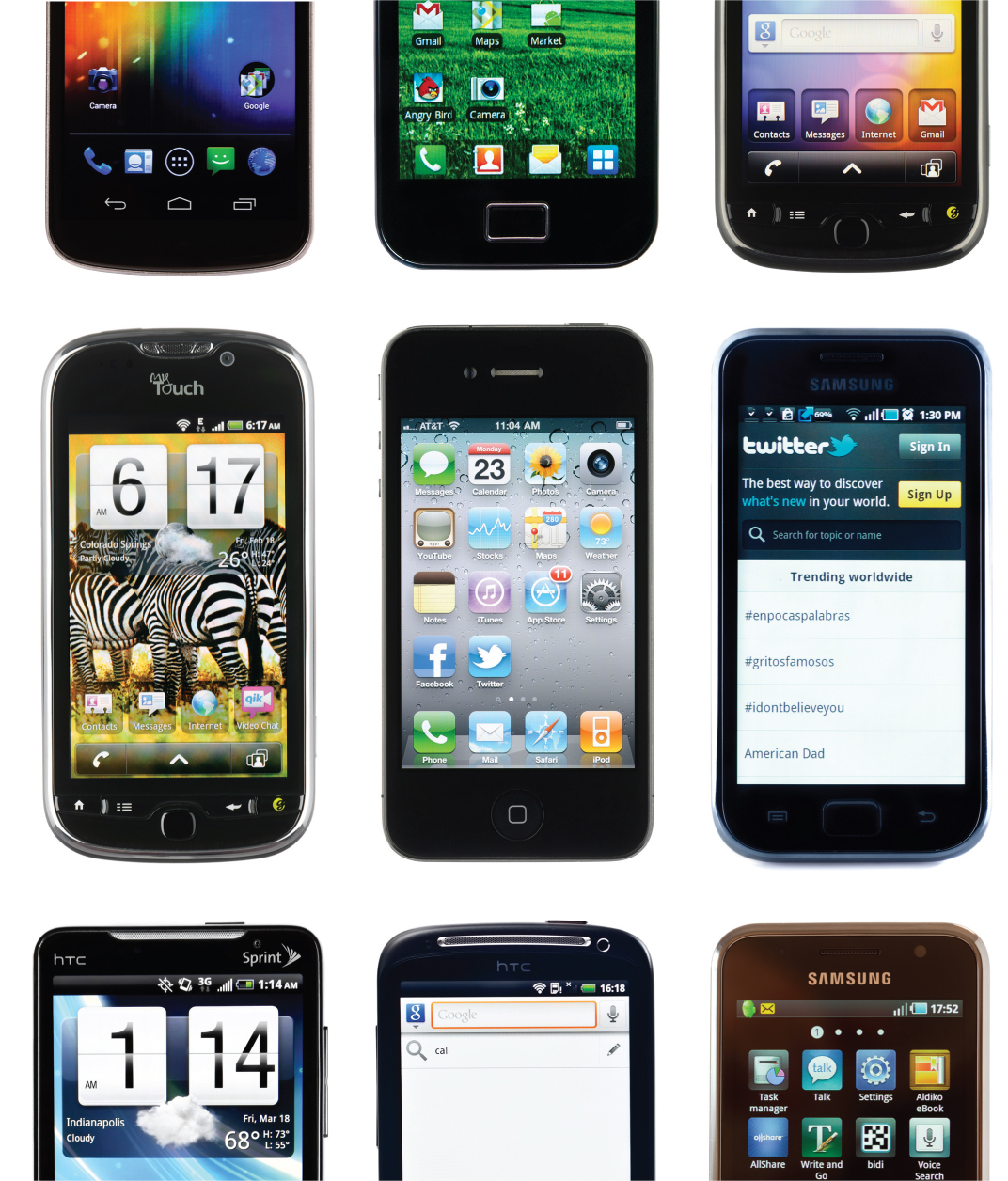
We could say that Jobs was most definitely a designer because he appreciated beautiful objects and was determined to make Apple products beautiful, too. He was insatiable in his search for new ideas, materials, and technology. He had developed design taste.
I use the word taste on purpose, to be provocative. Design is about being intentional at every point. Without taste and without intention, you can sell products that make money but do not represent the company's core values. Committing to a sense of taste means that you create your own charismatic products, or you create a process that enables your OEMs to show up with new products that reflect your own design taste.That intent begins at the top; at Apple it was Jobs and Senior Vice President of Design Jonathan (Jony) Ive who were the curators of Apple design and the Apple brand. They controlled the design and development process from the top down, and they made the final call on every product that bears the Apple name. They were the curators and arbiters of Apple's design taste.
That's not the only model, however, to create a singular vision of taste at a company. If there's no Steve Jobs or Jony Ive running the show and setting the standard at your company, you can articulate a set of design tenets or a design philosophy to help the organization understand the vision. Working together as a team with this vision in mind can lead to beautiful, intentional products that are as appealing to customers as those that come out of the Apple shop.
The danger is that without these definitions and commitments, a company's products might end up being curated by disparate voices within the organization. This is like staging an art exhibition with a dozen curators in charge, all of them bringing their own individual vision to the show. This robs the exhibition of a strong singular vision and intent, just as a company's products would lack a unified design vision that confuses the customer. One company that has developed a coherent design philosophy is Herman Miller, the U.S. furniture manufacturer. This company has established 10 tenets of design—including design that is “human-centered,” “purposeful,” and “spirited”—to encapsulate a way of thinking about design. These tenets find their way into the design of each product.
As the leader of a company, it is imperative for you to recognize the role you can play as an arbiter of taste. I have met many executives who believe this and have become the chief curators at their company. They articulate a design philosophy that outlines threshold requirements for products and defines their intent, as well as delineating what products should not be. A Ferrari will not have cup holders.
You might be thinking that the role of design guru isn't for you, that you're not that kind of person, that wasting time worrying about taste and beauty is not the best use of your valuable time. It can be tough to let go of these assumptions and to let yourself become a tastemaker like Steve Jobs, or to delegate that task to others. Either way, to design like Apple, it is essential to take design taste and curation seriously, because it helps a company better understand its products and where to take them, as well as its customers and what will make them happy.
TALENT
Given his blustery and compulsive personality, we can imagine Jobs as a design tyrant who imposed his will on everyone at Apple. But it wasn't that simple. Jobs also hired and cultivated a great number of people that he respected and trusted to be part of his “insanely great” team. He pursued and assembled design talent that helped him implement Apple's design philosophy.
One of those creative people was Hartmut Esslinger, head of the design firm Frog, which Jobs tapped as Apple's design agency of record in 1983. Frog, based in Germany, then opened an office in Silicon Valley, which was a bold move in the consulting world to support just one client. Jobs and Esslinger clicked. Jobs especially liked dealing directly with the head of a respected design firm as they worked together on perfecting Apple products and creating a unified design vision, beginning with the Macintosh SE.
When Jobs returned to Apple in 1997, he connected with Ive, the chief industrial designer who had been hired when Jobs was not at the company. Together they became Apple's tastemakers. Jobs promoted Ive to senior vice president, an acknowledgment of the central role Jobs ascribed to design. Within Apple the unusually tight bond between Jobs and Ive became crucial to spreading the company's design mantra and ethos throughout the organization.
Luckily both men shared an admiration for a concept of design that had originated in the German Bauhaus movement of the 1930s, which espoused a modernist view that eschews ornamentation and emphasizes function over everything else. Jobs and Ive also trusted each other. They ate lunch together “almost every day when Jobs was healthy and in the office,” Walter Isaacson writes in his biography of Steve Jobs.5 Jobs kept close tabs on the design team and what they were doing. He often spent time in the studio observing team members and speaking with them about projects and problems. He didn't read about what the designers were doing in e-mail; he saw what was on their desks and heard what was on their minds, and he didn't refrain from commenting on what they were doing, or cajoling—some might say bullying—them to do better.
Jobs created a strong, direct relationship with Frog founder, Esslinger, to establish the design language for Apple that led to products like the Macintosh SE. Image: Danamania, Wikipedia
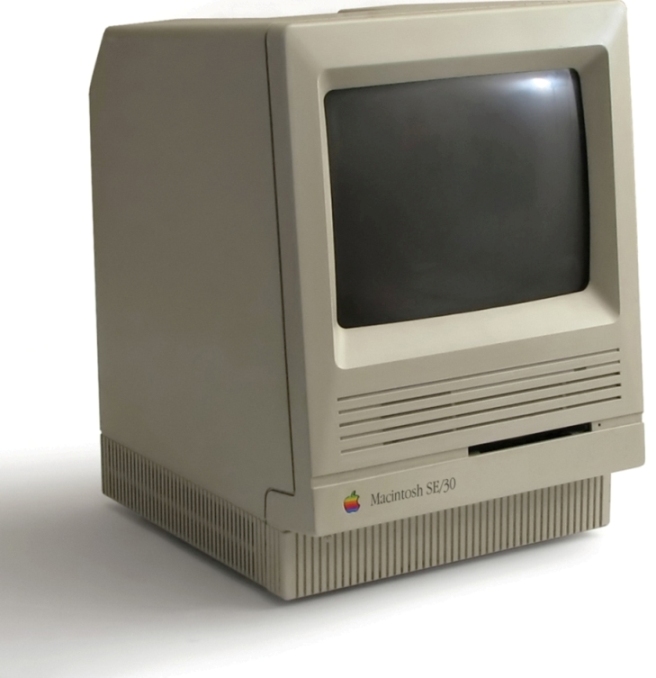
You can build this design capability internally, as Jobs did with Ive and his team. Or it can be done externally, in a relationship with an outside design firm such as Frog, with its strong leader Esslinger. At my firm, we pursue this type of design consulting relationship with a variety of companies. From my experience, they work best when a very senior person inside the company is in a position of authority to make a consistent commitment to design over a sustained period of time.
At Herman Miller, the design team is relatively small, given the company's outsized commitment to design and its reputation as a design leader in the furniture industry. Gary Smith, director of Design Facilitation at Herman Miller, is in charge of leveraging talented designers outside of the company. “My title describes my role exactly,” he explained to me. “I am not a manager so much as a facilitator, finding designers outside of our walls to create excellent, original designs for Herman Miller that also respect and reflect the historical importance of design to our brand and culture.” Herman Miller's approach to design is different than Apple's, but nonetheless very successful. Apple creates products with an identical voice; Herman Miller's products represent a range of design voices, and the company ensures that all of these products live up to the company's design ideals. You could almost think of Herman Miller as a record label that brings in a variety of the most creative musicians—in, say, jazz or pop or classical—where each one makes different music, yet all have the same discerning sense of taste. Both the Apple and Herman Miller approaches to inculcating design taste can work for your company.
Herman Miller lives by 10 tenets of design that ensure their products embrace the same philosophy while not necessarily looking the same. Images: Courtesy Herman Miller, Inc.


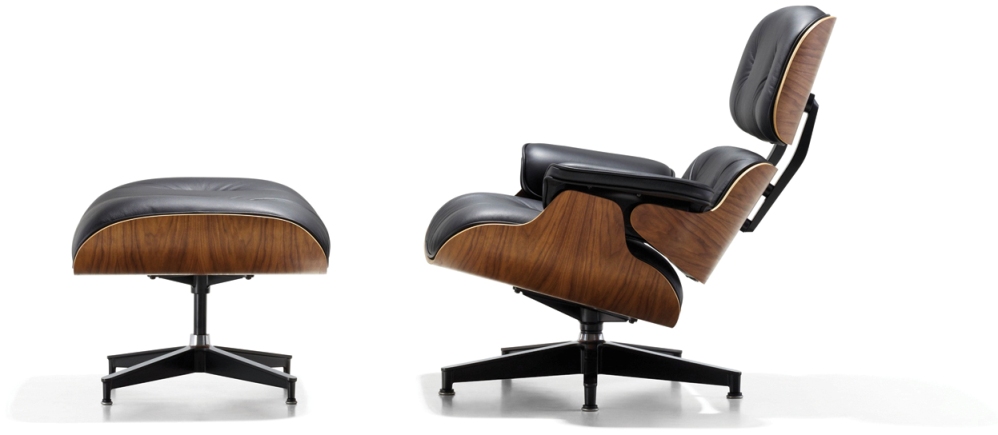
CULTURE
In 2011, a supplier to the automotive industry approached us. For confidentiality reasons, I can't reveal all the details about this client, but it was clear that this company had a problem. While it was only a component supplier, it seemed that its customers—the carmakers—were disappointed with the company's commitment to design. In fact a sports car manufacturer, which had been to its office to evaluate the company's suitability as a partner in developing technology components for an upcoming platform, came away being less than impressed with its design chops.
This particular supplier had been successful for many years based solely on its technical capabilities. It had a very small design team, because it was in the habit of letting the carmakers do their own design around the components that this particular company produced. But as technology increasingly finds its way to cars—from GPS to entertainment and night vision systems—carmakers are learning from consumer-electronics companies like Apple and looking to their suppliers to develop a design point of view. They want every company that is involved in creating the car, including parts suppliers, to be thinking about the customer and how design can speak to the driver behind the wheel.
This supplier didn't want us to design a chic digital speedometer. It needed us to figure out how to put together a design team that would help it compete and win over clients, the carmakers. All of a sudden, design had become the company's most critical need. The senior engineering manager who called us knew that the problem would not be fixed just by adding designers to its research and development centers around the world. This company needed to change the way it thought about design and what design could bring to the company. To reap the rewards of design, it would have to create a design culture.
Over the past 20 years or so (call it the age of Apple) design has definitely made advances as an important component in the development of products and services. But it's still primarily used as window dressing to create a pretty package rather than as an approach that determines the entire creative culture of a company. Many of our clients seek our help only when they have a special need for innovation. They've been able to free up some cash to pursue an innovation effort, a project that is usually outside the realm of their conventional development programs. That has little to do with creating a culture of design. Design must become part of your company's DNA if you are going to design like Apple and achieve the advantages of beauty, ingenuity, and charisma that I discussed in Chapter 1.
To do this, teams at every level in an organization must learn to think like designers. By that I mean they explore options, question the status quo, and take risks, whether they are in the design studio or the marketing or packaging department. At Apple, it was Ive, the design director, who usually got all the credit. But Tony Fadell pointed out to me in an interview that at Apple, “Design isn't any one team. There are people taking risks all over the company.” Design is a way of thinking and acting that permeates Apple because the company has instilled a design culture.
That design culture is often reflected in Apple ads. The now iconic “Think Different” campaign from the late 1990s, created by its long-standing ad agency ChiatDay, featured notables such as Albert Einstein, Bob Dylan, Martin Luther King Jr., and Gandhi, who were presented as mischievous, upstart, outsider personalities. “Here's to the crazy ones,” the copy began. “The misfits. The rebels. The troublemakers.” No computers are seen in the ads. Nor are they needed. Those misfits, rebels, and troublemakers referred, of course, to Apple itself and to its technology and the culture of design (with its upstart, outsider, and mischievous tendencies) that Jobs had created and that sets Apple apart from other companies, especially its archrival Microsoft.
No history of Apple and its design culture is complete without acknowledging the pioneering work of Bob McKim, a former professor of design and engineering at Stanford University. McKim influenced many of the creative people who gravitated to Apple and other companies because he brought together the seemingly disparate worlds of design and engineering with a course of study in the 1960s called Product Design. The earliest designers at Apple, including Jerry Manock and Bill Dresselhaus, who between them designed the Apple II, the Apple III, the Lisa, and the Macintosh, were graduates of this program.
McKim drew on both the arts and sciences and encouraged students to move between the two. He saw a direct link between a person's ability to draw, imagine, and see and believed that your interests and skills shape your perceptions of the world around you. McKim put his ideas together in a course that is still taught today. Called Visual Thinking, it teaches Stanford engineering students right-brain skills like sketching, prototyping, and lateral thinking approaches to problem solving.6
I have taught this course several times at Stanford and always marvel at the reaction these future engineers, with their penchant for sober analytical thinking, have toward the class. “I felt like I was in kindergarten again,” is not an uncommon refrain. For many students, the reason they feel like they're in kindergarten is because they haven't used that part of their brain for 15 years. I see a similar thing taking place at Apple: There is a mash-up of great technology and operational excellence with chaotic and experimental exploration.
Stop for a moment and think about your own experience. If you are a manager you, might be wincing while reading this book, waiting for the mathematical proof or the market statistics that demonstrate how design will predictably revolutionize your business. Where is the process or the playbook, you might be wondering, to accomplish these goals? Because you are analytical, future-oriented, and conscious of productivity, you are questioning what you will learn to sharpen your skill and competitiveness and improve the bottom line. You might be scratching your head and puzzling over why you should even care about design.
But let's say you are a graphic designer. After glancing at only a few pages, you will have instantly noticed many details about this book, like the justified text layout on this page, the paper stock, the serif typeface, and the tabs along the right-hand edge. You could close the book now and recall all of those features in detail. As a designer, you are more comfortable in the moment and aware of visual relationships and how the pieces fit together for their intended use. Designers see things in the world in detail because they spend time creating their own things. They can imagine things that don't yet exist, because they have experience in seeing and creating.
What about your own creative abilities? Do you marvel at the way some people can regularly come up with out-of-the-box ideas that no one else in the room thinks of? In my experience, more people in the world can write a detailed marketing-requirements document or understand a financial statement than can stand at a whiteboard and make an understandable sketch of a product they are imagining.
Apple focuses on hiring people who “get” the Apple culture, according to Larry Tesler, the legendary software designer and early pioneer of the graphical user interface (GUI) at Xerox Parc and at Apple. In other words, Apple likes to hire people who hew to McKim's view of the world. Invariably, these people have something going for them in the arts, Tesler recalls. They might be fine artists or musicians outside of their usual gigs as engineers and software geeks. Says Tesler, “The big insight in those days was that great people created a great process. It's not the process that makes the people great.” That became the foundation of the Apple design culture.
Yet it's not enough to simply hire people with great creative talent and slip them into an existing organization. As we saw in the Motorola story in Chapter 1 and with the automotive component supplier in this chapter, if design is isolated in a department and doesn't filter across the entire organization, it's easy to dampen or even kill its impact.
Think of design as a kind of beneficial virus inside a corporation. It's small, but it can spread wildly and wield considerable influence. Because of that, it also has a great many enemies. Most corporations are filled with people who, for whatever reason (usually self-preservation and fear of the new), see themselves as the antibodies to the design virus and try to inhibit progress. They strive to preserve the organization as it is. They might appear to roam the hallways and meeting rooms in search of new ideas, but then they kill them on contact with extraordinary skill.
That's too bad, because in my experience there's no shortage of ideas out there. When people hear about what I do, they are all eager to tell me about some idea they have. The real trick is not in finding the great idea but in knowing how to execute the right idea, which is the goal of a creative culture. At the memorial for Steve Jobs held by Apple for its employees around the world, Ive gave a moving tribute to Jobs's role in protecting ideas. “[J]ust as Steve loved ideas, and loved making stuff, he treated the process of creativity with a rare and a wonderful reverence. You see, I think he, better than anyone, understood that while ideas ultimately can be so powerful, they begin as fragile, barely formed thoughts, so easily missed, so easily compromised, so easily just squished.”
Looking back on the Jobs era, I see him as someone who put Apple in a unique position. As the founder and leader (and even with a break in his tenure), Jobs had the chance to bake design into the vision of the company, and the design culture grew out of that vision. He drove the company to be creative and to innovate continuously, as if it were always an enterprising, high-energy start-up. “Apple is the biggest startup in the world,”7 Jobs told Walter Mossberg, the Wall Street Journal's technology correspondent in 2010 at the D conference. With Jobs at the helm, Apple never veered from the top-down design management approach of its visionary founder.
To be sure, it helped that Jobs was the founder. Founders have the opportunity and the will to shape the kind of company they want, whereas nonfounding managers usually don't. Founders are clear about what they want to do, and they can transmit that to their staff. The whole company works hard together in a creative, flexible, and oftentimes chaotic environment to get the enterprise off the ground. Fadell summarized the difference for me: “Founders treat their companies like their own kids, and they are more comfortable taking risks with them. You're not going to take someone else's kids bungee jumping.”
If you are a founder, consider yourself lucky. You can influence the culture you would like your company to follow and embrace. You can follow in the footsteps of Jobs and his strict culture of design by hiring engineers with liberal arts leanings. Or you can emulate Jeff Bezos of Amazon, where risk taking is encouraged. Or make a commitment to customer service like Tony Hsieh of online shoes and clothing retailer Zappos.
At some point, however, successful companies must move beyond their founders. That's where Apple finds itself today, following the death of Jobs in 2011. I once thought Apple wouldn't survive without Jobs, because he was just too important to the entire culture he had created. But in researching material for this book I've come to realize that Jobs instilled several key attributes in his company, as outlined in Jim Collins's successful business book Built to Last, that are necessary for survival after the founder departs.
One of them is a cultlike culture, in which employees believe they are part of an elite team that shares an ideology not found at other companies. Another idea that Apple embodies is what Collins calls the Big Hairy Audacious Goal: a belief among the faithful that they are making a difference with their products, which are inherently better than those made by other companies.
Many people already work in a company with an established culture and a well-defined and ingrained approach to doing things. That culture probably doesn't focus on design. But have no fear. You can make a difference with design even in a company with an established culture like our old punching bag, Microsoft.
Although we make fun of Microsoft for its apparent lack of design awareness, nobody can dispute the fact that the company is a market success and a credit to Bill Gates as a business visionary. Many talented people in its ranks have helped create the ubiquitous software that billions of people use every day. True, Microsoft hasn't created many products that meet the standards of beauty, ingenuity, and charisma that I have outlined. But I would be dishonest not to acknowledge many bright spots in the company's product history that deserve a closer look, especially now, when I believe Microsoft is changing its attitude about design and allowing a new design culture to take root.
Microsoft's Albert Shum explained it to me this way. “All the technology in the world doesn't mean that you're going to make a great product. It's about getting the right balance of the rational and the emotional.” That sounds exactly like something Steve Jobs would have said about the coming together of science and the liberal arts and the need for products to connect on a deeper level with customers.
Shum also points out the hurdles facing Microsoft with its existing culture. There is an open culture at the company, which in many ways is a good thing. But the downside is that “everyone does their own thing,” Shum explains. Such freedom can lead to products that are unfocused and don't reflect a unified design voice (unlike at Apple, where everyone is on the same page about design culture). Freedom means there is no overriding design ethos or philosophy. Design is diffused. Every marketing manager has a say and pushes for something different, as Microsoft's satirical packaging video suggests.
The simple and engaging Windows Phone operating system running on a Nokia Lumia handset that stands out for its clear reinterpretation of the smartphone slab. Image: Nokia
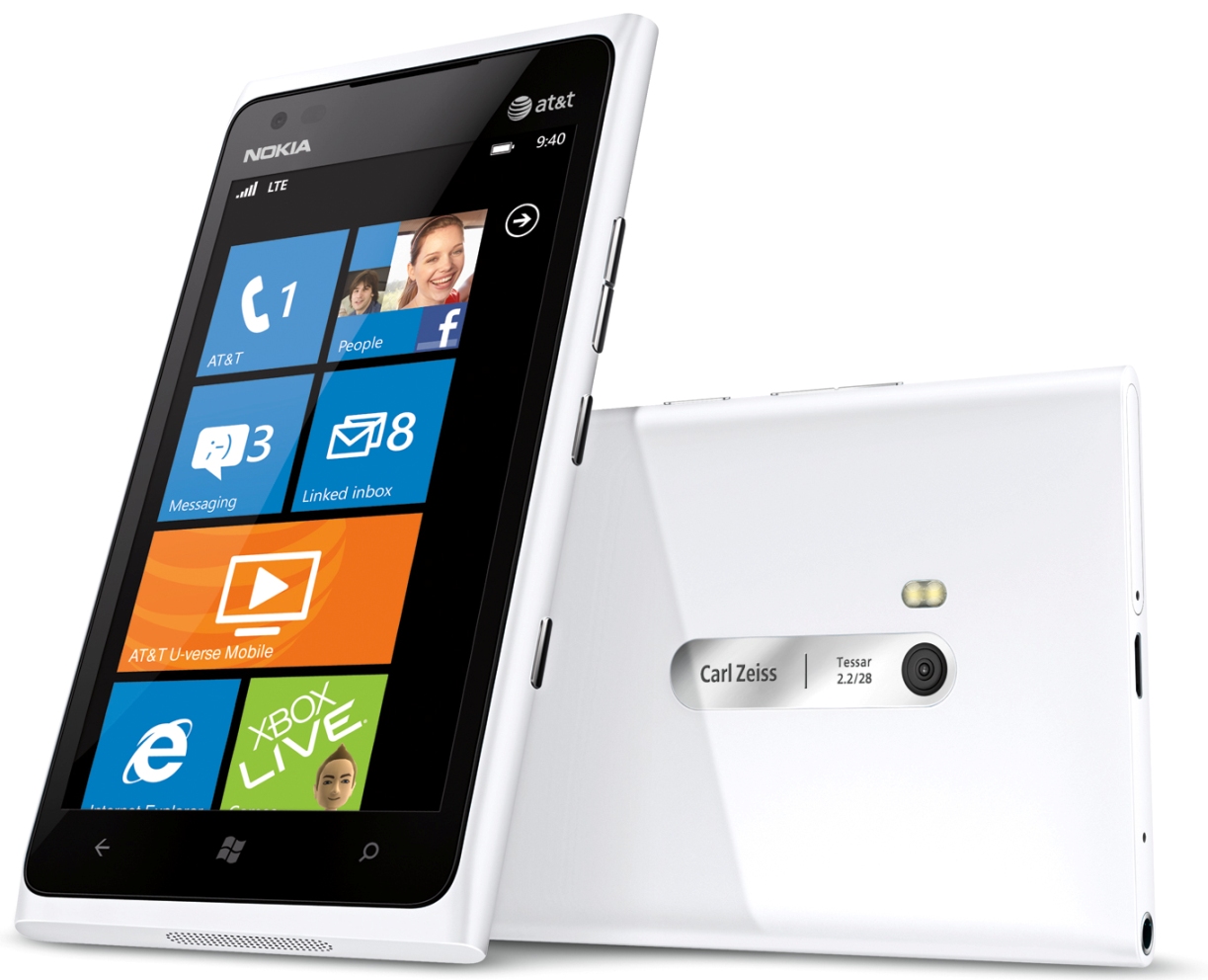
Shum is trying to create a design ethos at Microsoft. In an echo of the Herman Miller approach, he is establishing an aspirational design playbook to help infect the organization with a design culture. The challenge is to get everyone on the Microsoft team, from the marketers and developers to the technologists, and to align them around a single vision. “Design too often describes the final thing that you make, instead of the way you get there,” Shum says. He's talking about a design culture like Apple, of course, which he acknowledges as a model. “We strive to make products where every last detail was considered, intentional. Isn't that what we like so much about Apple products?”
Shum rallies individuals involved with his projects from across the company by developing a narrative and then bringing others along. With the end customer in mind, he is always asking, “What is the story that we're building for the customer?” His view is that customers don't look at the range of products and their brand and messaging as different elements of a company. Customers see all of these as components as part of a single story. “You have to get people believing in what you're doing,” Shum explains. “That's why I'm moving into a role that encompasses not only product but brand, too.”
Microsoft's Zune music player and Windows Phone suggest that the company is capable of delivering great products and that Shum's efforts to overhaul the design culture could lead to more. What we can learn from this story about Microsoft is that there are consequences for a lack of design culture. And any company or organization can change and integrate design taste, talent, and culture into its DNA so that a structure and framework exists to create great products and services.
SUMMARY
To design like Apple means creating an organization around the concepts of design taste, talent, and culture. You must have an arbiter of taste, an empowered team of designers, and widespread behaviors throughout the company that reward creative thinking, risk taking, and experimentation. To design like Apple is to establish and nurture a set of strong, nonnegotiable design values that create the extreme emotional engagement of beauty, ingenuity, and charisma throughout the company.
THE BUILDING BLOCKS
Design taste
can be acquired through education or personal background and interests and is enhanced by surrounding yourself with creative people. An organization that is designed like Apple will have a tastemaker near the top of the organization to curate the design outcomes of the company, and this person will have an established design philosophy or vision.
Design talent
refers to a dedicated design capability, whether an internal team of designers or retained external designers and design firms that bring the design vision to life and carry out development of products and services.
Design culture
results when an organization's leaders value design and hire people who have a diverse appreciation of creativity, regardless of job responsibilities. Design culture is a beneficial virus that spreads wildly and influences all aspects of an organization. Design culture can be baked into the company by a founder or added later, when a company decides that design values will be beneficial.
DESIGN LIKE APPLE AGENDA
Before moving on to the focus on products in Chapter 3, consider the readiness of your team to create insanely great products by answering the following questions:
1 Even if you're not a designer by training, do you have design taste? If you don't have the time and inclination to do so, should you create a senior design role at your company to curate the output of the entire organization from a design point of view? Jobs and Ive have been the arbiters of taste at Apple; Smith facilitates good design at Herman Miller; and Shum is changing the design culture at Microsoft.
2 Do your products exude a confidence, intentionality, and consistency rooted in a clearly articulated design playbook? Do your products adhere to a unified design vision or philosophy that is spelled out as an actionable design philosophy for staff to keep in mind at all times? Follow Herman Miller's example and create your own tenets of design.
3 Most modern companies have an awareness that design is important to the products and services they make. What's the state of that awareness at your company based on the scale, “Design is added on at the end of product development” at the low end to “We support design creativity at all levels and in everyone's job” at the opposite end?
4 One metric for the design values of an organization is that everyone knows which behaviors are discouraged. Would cutting corners on a design be considered acceptable?
5 Finding the right design talent is essential to promoting design in your company. To design like Apple, you need creative people who can bridge liberal arts and technology. Do you seek people with diverse creative interests, even for positions that don't directly require creativity thinking?
Notes
1 The iPod Observer, “Micorosft Confirms It Originated iPod Box Parody Video,” March 13, 2006, www.ipodobserver.com/ipo/article/Microsoft_Confirms_it_Originated_iPod_Box_Parody_Video/.
2 Burlingham, Bo and Gendron, George, “The Entrepreneur of the Decade,” Inc. magazine, April 1, 1989, www.inc.com/magazine/19890401/5602.html.
3 Burrows, Peter and Sager, Ira, “Back to the Future at Apple,” BusinessWeek, May 25, 1998, www.businessweek.com/archives/1998/b3579156.arc.htm.
4 Jobs, Steve, “Stanford University Commencement Speech.” Stanford University, California, 2005.
5 Isaacson, Walter. Steve Jobs. New York: Simon & Schuster, 2011.
6 McKim, Robert H. Experiences in Visual Thinking. Brooks/Cole Publishing Company, 1980.
7 Jobs, Steve. Wall Street Journal's Technology Correspondent D Conference, 2010.
